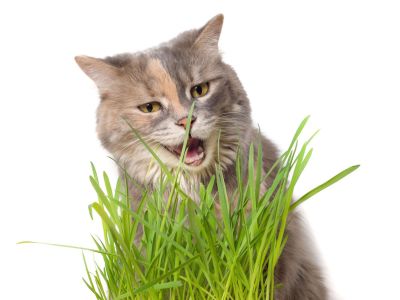Grass for Cats
You may wonder why your cats insist on going outside, no matter the weather. When you look, you’ll often find them munching and chewing on blades of grass in the yard. Cats often do this when there is a deficiency in their diet or possibly just to fulfill some long-established instinct. (Dogs may do this as well.) You can easily fulfill their needs with a few containers of freshly grown grass placed throughout the household. This may also stop undesirable behaviors, like your animals chewing on or eating your indoor plants. If you find damaged houseplants regularly, this is an incentive to grow cat grass as an alternative to the felines eating your houseplants.
What is Cat Grass?
Cat grass is normally a mix of seeds of grasses like wheat, oat, barley, or rye. These can be planted and grown indoors in a bright, sunny window. It is a different plant than catnip. If your outdoor temperatures don’t get to freezing in winter, you might be able to grow it outside. Ideally, this grass grows in temperatures around 70 degrees F. (21 C.), but it will grow in lower temperatures too. Experiment with growing temps for this plant to learn what is best in your location.
How to Grow Cat Grass
Purchase seeds at your local pet store or home improvement center. You may also find kits that include everything you need. If you purchase seeds only, you’ll need soil and containers in which to plant. Plastic containers are safest if they’ll be getting knocked or pulled about by the animal. Add a few drain holes in the bottom. Fill halfway with soil and plant seeds an inch or two (2.5 to 5 cm.) deep. Keep the soil moist, but not soggy until seeds sprout (within three days). Reduce watering at this point. Move to a bright spot with morning sun. Allow the grass to grow for about a week and position it for the feline. As you know, it may take a day or so for interest to develop in a new plant. Immediately start a new container growing. Growing cat grass indoors is a great way to help keep your animals safe from the elements. It may also prevent them from eating outdoor grass that contains fertilizers or pesticides. Hopefully, it will stop them from damaging other indoor plants. It is easy to grow, so if they like it, it is a win-win for all concerned.
